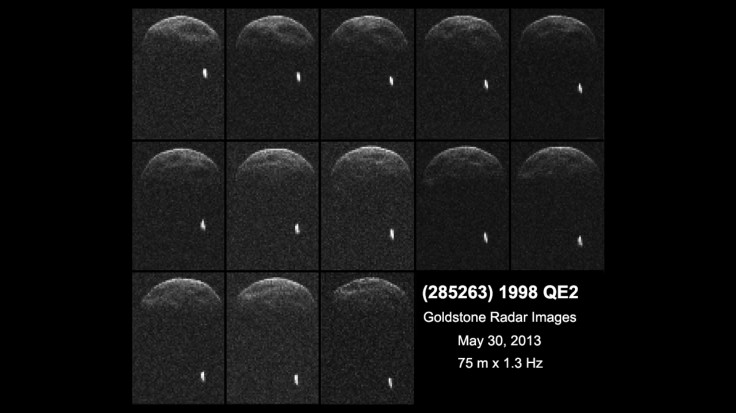Asteroid 1998 QE2 Live Stream: Watch The Giant Space Object With A Moon Pass Earth [VIDEO]

The giant asteroid 1998 QE2 -- big enough to have its own moon -- will make its closest pass to Earth around 5 p.m. EDT Friday, and you can watch via a high-definition live stream beginning at 4:30 p.m EDT.
The Slooh Space Telescope and the Virtual Telescope Project will provide a high-definition live stream on its homepage. Slooh, which calls on astronomers and other enthusiasts from around the world to help capture space developments, will be streaming the event with a view from the Canary Islands.
The giant asteroid has zero chance of hitting Earth, but due its enormous size -- more than 1.7 miles in diameter -- Asteroid 1998 QE2 will be closely monitored and observed by astronomers and researchers. The asteroid will pass 3.6 million miles from Earth, the closest it will be to our planet in the next 200 years.
Scientists will observe Asteroid 1998 QE2’s orbit and its behavior as it races across space, reports Space.com. The asteroid, discovered on Aug. 19, 1998, by the Massachusetts Institute of Technology’s Lincoln Near Earth Asteroid Research Project, has already offered NASA a surprise when it was discovered to have its own moon.
Asteroid 1998 QE2 is just one of 10,000 Near-Earth Objects that NASA and other researchers have tracked. There could be millions of NEOs yet to be identified with researchers focusing on these space rocks in order to discover potential threats to Earth. While Asteroid 1998 QE2 may not be as spectacular as February’s Asteroid 2012 DA14's flyby, the large asteroid’s passage is noteworthy.
Slooh’s live stream begins at 4:30 p.m. EDT, and experts expect Asteroid 1998 QE2 to come closest to Earth at 4:59 p.m. EDT.
© Copyright IBTimes 2024. All rights reserved.












